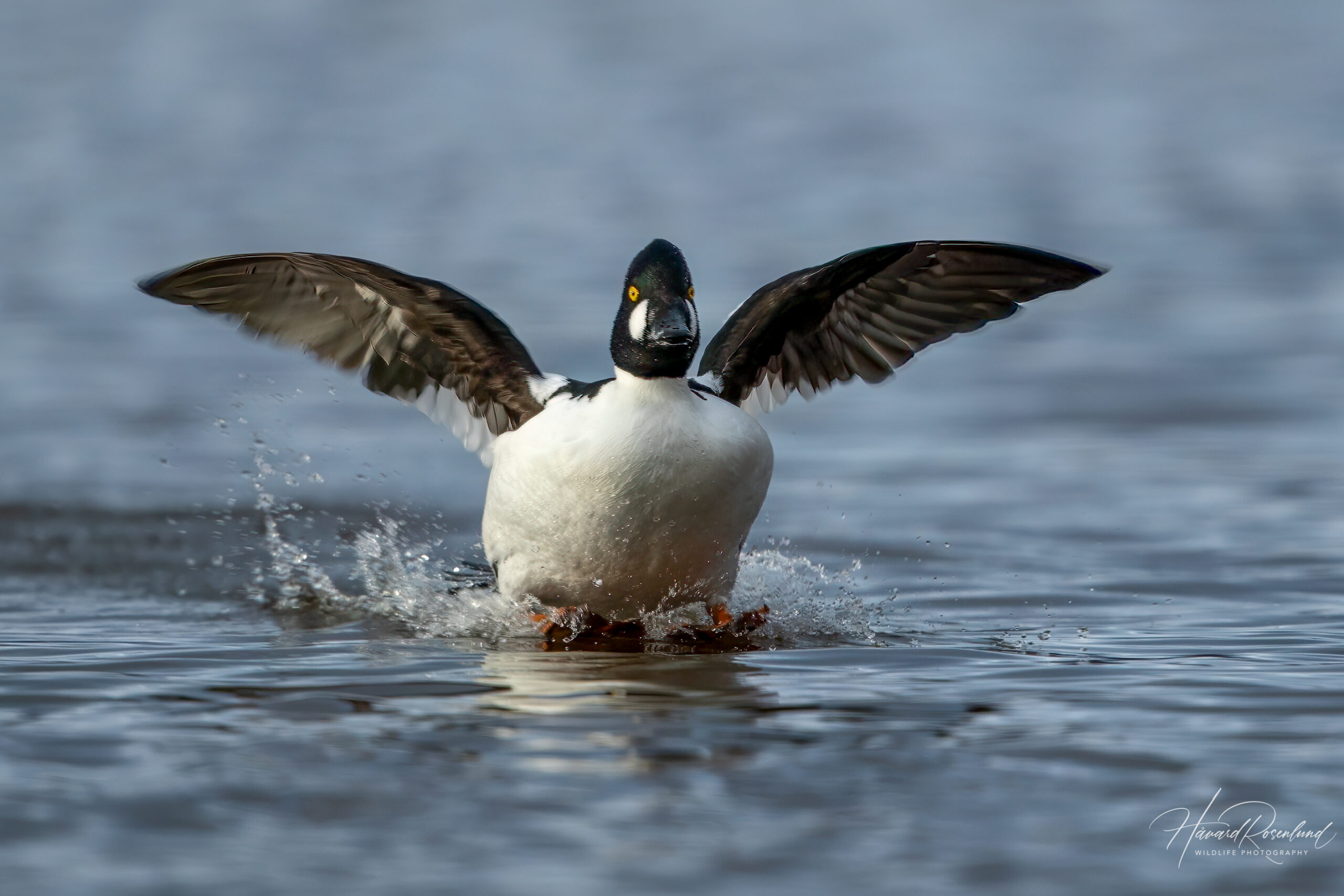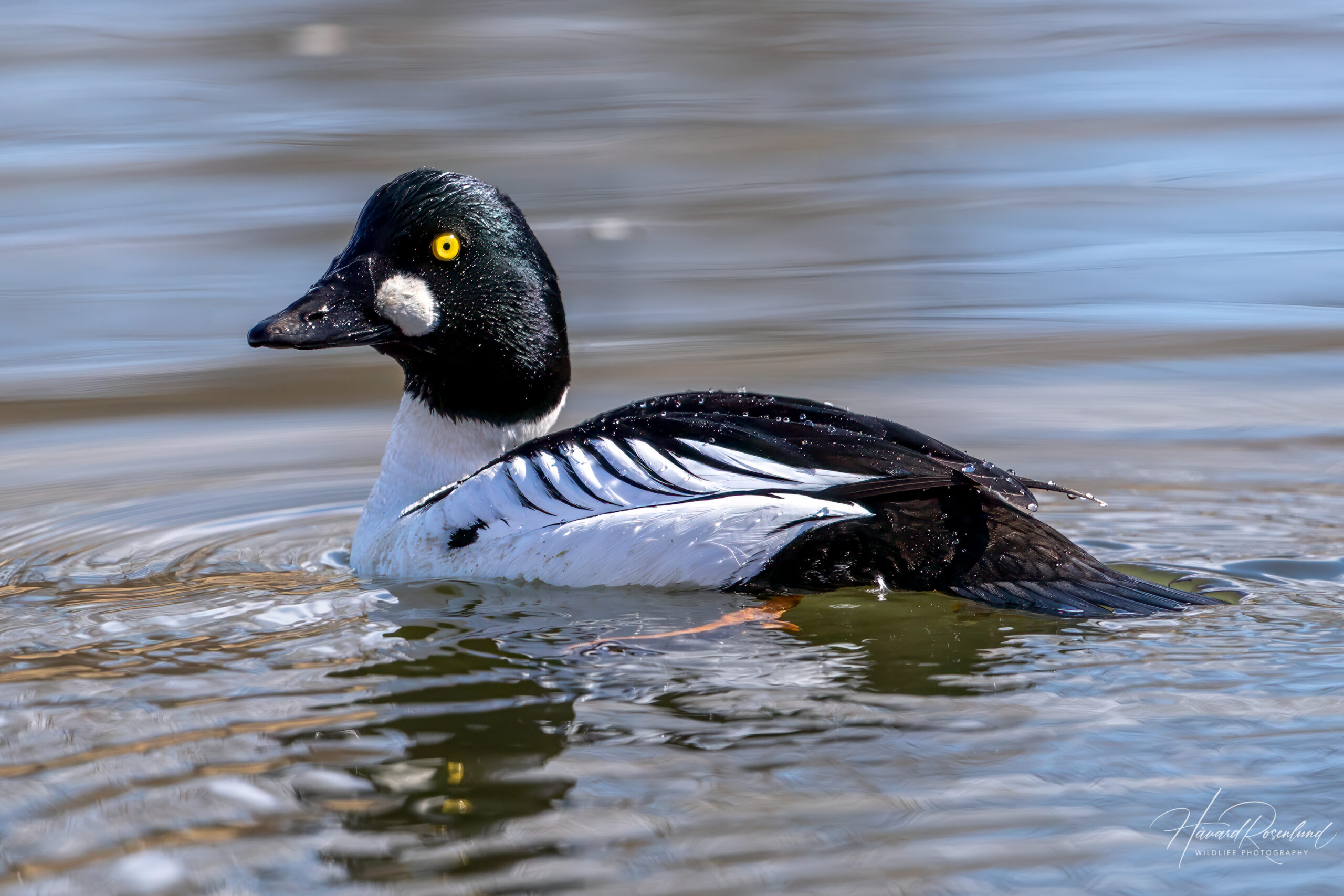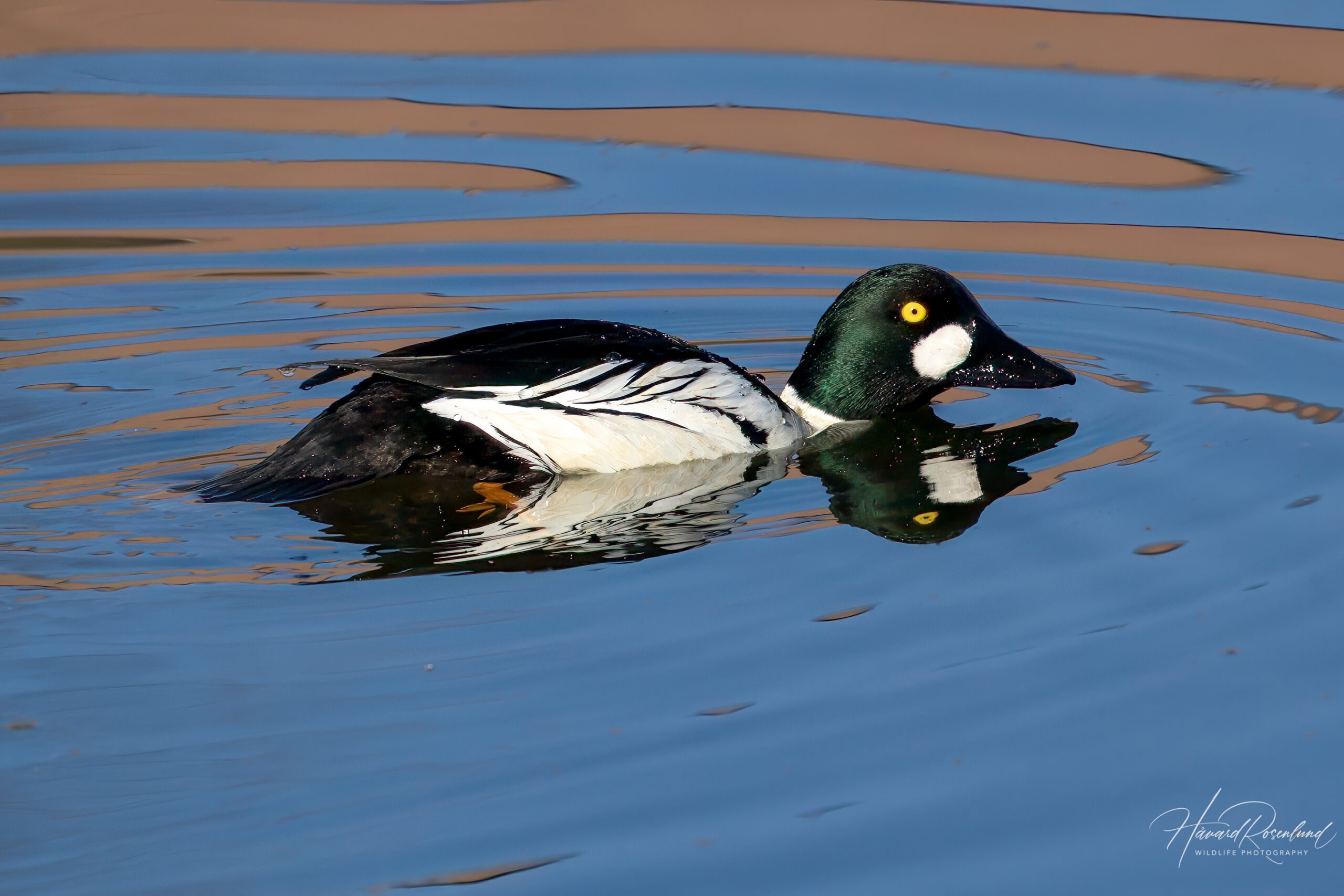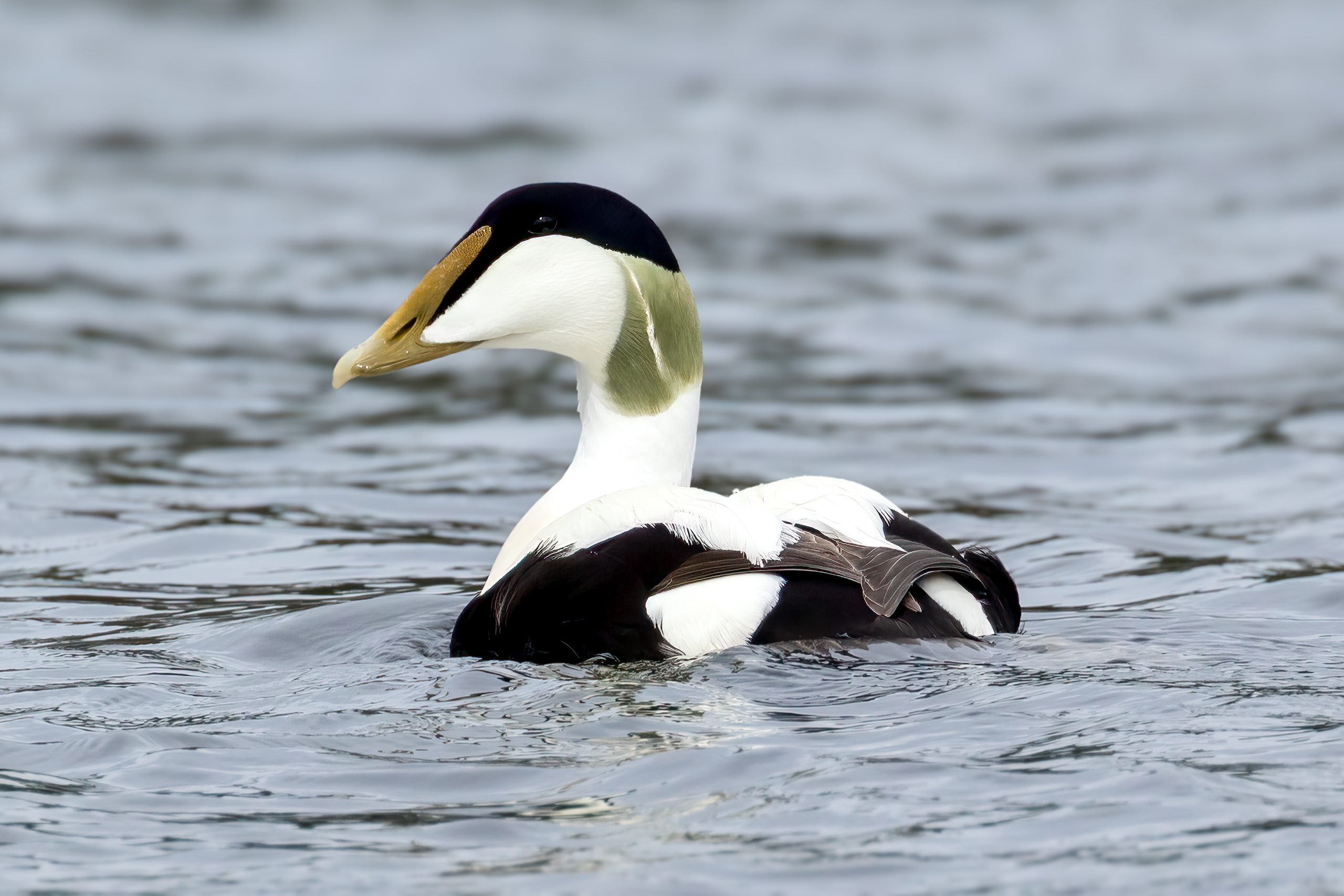Description
The common goldeneye (Bucephala clangula) is a medium-sized waterfowl that breeds in the northern latitudes of Canada and the northern United States, Europe, and Asia, wintering further south in protected coastal waters or open inland waters. It is named after the male’s golden-yellow eye. Adult males also have a glossy green-black head with a white spot near the base of the beak, a white body, and black back. Females are less colorful, with a white eye, brown head and a mostly grey body. They are distinguishable from most other duck species by their unique coloration, the males’ bright eyes and the characteristic body shape. Goldeneyes are about 45-52 cm (17.7-20.5 in) in length, with a wingspan of 65-85 cm (25.6-33.5 in). They are capable of producing a variety of sounds, but are most notable for the male’s distinctive “whistling” wings during flight, a sound produced by their fast wingbeats.
Diet & Habitat
Common goldeneyes are diving ducks, feeding underwater. They eat a variety of aquatic creatures such as insects, crustaceans, and small fish. Occasionally, they consume aquatic plants. They prefer breeding in boreal forests near large lakes and rivers, wintering in sheltered coastal bays, estuaries, and ice-free lakes and rivers. Their feeding technique is notable, as they can dive up to 6 meters deep to forage for food.
Migration
These ducks are migratory, traveling from their northern breeding grounds to winter in more temperate zones. The migration starts as the water bodies in their breeding areas begin to freeze, around late autumn, and they return in early spring. Their migration patterns are notable for the long distances covered, often flying at high altitudes.
Nesting
The breeding season starts in late spring. Common goldeneyes are known for their elaborate courtship displays, including head throws, bill pointing, and vocalizations. Nests are usually located in tree cavities near water, often made by large woodpeckers. The species can also use nest boxes. Females lay 6-10 eggs, which are incubated solely by her for about 28-32 days. The young are precocial and leave the nest within a day or two after hatching, but they are tended by the mother for several weeks. Fledging occurs at 55-65 days.
Status
The common goldeneye is a species with a large global range and a stable population, and it is listed as least concern on the IUCN Red List. Habitat loss and changes in water quality pose as potential threats for some local populations.












